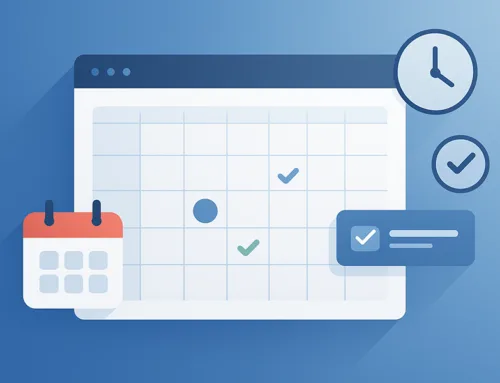If there’s one industry that predictably grows each and every year, it’s e-learning
E-learning has been enormously important for many years, and it’s become even bigger since 2020. E-learning around the world was worth $107 billion in 2015.
By 2025, this market is predicted to be worth $325 billion.
Given the strength of this market, you’d be missing out if you didn’t create an online course. The advantages of creating an online course extend far beyond just the potential direct profits—and those are substantial.
The Benefits of Selling an Online Course
Passive income is more than just a buzzword.
It’s a dream for most of us. Creating and selling online courses is one of the ways you can create the passive income you crave.

E-learning is a bigger and more important industry than ever before. It’s positively booming. As long as you get it right, you can make a lot of money in passive income by selling a course that you’ve created.
You put in the work to create the course just one time. After that, it will make money without any further work. With passive income, you will make money while you sleep.
One of the best parts of creating a course is that it positions you as an expert and leading authority in your field or niche. Think about how it changes your perception of professionals when you see that they offer courses. It builds credibility.

When it comes to creating a course, content is everything.
Your course will almost sell itself when it offers top-notch content. Outstanding content will demonstrate your professional competence and relevance, as well.
If you’re interested in developing a course on how to become an illustrator or teaching French pastry – the way your course looks, feels, and functions needs to be perfected.
You will still need to put in a lot of marketing effort. But all the marketing in the world won’t make a course with poor content successful and profitable.
1. Get the Content Right
Set your course up for success by making it satisfy a real need and desire in the market. When your course is built on high-quality content, marketing is effortless. But to create the best content, you need the right tools and equipment.
Fortunately, there are a whole host of online tools for creating everything you need.
Multimedia is a key concept in online learning. When you include several different kinds of media and communication methods in your course, you have the best chance of appealing to all the different learning styles.
Overall, video (with audio) is the most popular and successful media type in online learning. Graphics are also key. Other elements may also include audio (without video), animation, assessments, and interaction tools.

Make your content engaging and attractive, using eye-catching and professional-looking formats. If you’re designing your course yourself, you will need access to an excellent (and easy-to-use) graphics program or site. Many beginner course designers love Canva for this purpose.
When it comes to making videos, choose a program or app with all the necessary functionality. For example, you will probably need screen recording capability. Check to see what kinds of editing options the software features. Ideally, you will be able to cover all your video-making needs with one software.
One popular video software option is Camtasia or Write-on Video. Do careful searches to find the tools that work best for you.
Your course should be user-friendly and engaging at every point, using learning methods that work.
Remember that students who complete your course will review and talk about it. When you get great reviews, they act as a sales pitch for continued sales and even your next course.
A major step you can take towards making people ready and willing to invest in your course is getting stamps of approval and accreditation. For example, seek accreditation and recognition from boards and organizations in your field.
2. Market It Right
To sell your course, you must market it in the right places and to the right people. You’ve got to use the right kinds of marketing techniques to maximize potential sales.
If you haven’t launched your course yet, create a coming-soon page.
This is a strategy many course creators overlook, but it’s surprisingly useful. You can do this even before you begin creating the course. You want to create some buzz about your course, getting your potential customers excited to purchase it when it launches.
Webinars are a fantastic marketing strategy.
They mean viewers will get a taste of your course, leaving them wanting more. It’s an opportunity to directly connect with your market. Think about starting a webinar that you hold periodically, maybe weekly.

This will help bring your course to the attention of people who are likely to be interested in your course.
There are a plethora of effective marketing strategies for selling online courses. Some of these include discounts for webinar attendees, early-bird deals, social media advertising, and public relations. For the latter, you could get mentions on popular podcasts. You could even start a podcast of your own.
Email marketing is another effective strategy if you want to sell online courses. And one of the most effective ways of getting potential customers’ email addresses is by creating and promoting a lead magnet.
A lead magnet is an item that people can access only if they provide their email addresses. Great lead magnets you will often see used are white papers.
Once you use this method to generate a list of email addresses, you can start marketing to your leads directly by emailing them. Another tactic is to put together and offer a mini-course as a teaser for prospective customers. Email prospects about the mini-course, and get them hooked.
Don’t forget about your course sales page. This is an essential part of effective marketing for your online course. If you’ve ever written a sales page for a product, you know that its only purpose is to sell.
The sales page you create for your course will be pivotal to convincing people to make the purchase.
Remember to build an audience before releasing your course. If you have an existing audience to which you can market your courses, you’re set to make a lot of money. Not only will you already be established in your field, but you should also have an email list.
3. Choose the Right Hosting Platform
You can host your course independently or choose an appropriate hosting platform. Each of these approaches has advantages and drawbacks, and the one you choose should be the option that best suits you.
One thing to keep in mind when going with a hosting platform is that it will take a commission (or percentage of your profits).
If you want to use a hosting platform, do your research to find one that will let you make the most amount of money. Putting your course on the platform has to be profitable.

The most important part of selecting a hosting platform is making sure that it fits your needs, your budget, and the specific requirements of your course. There are no real shortcuts to figuring this out. You will have to carefully look through what each option offers and any costs that are involved.
If there are significant costs, you will have to ensure that there’s a reasonable prospect of still making a profit when all is said and done.
In many cases, the more a platform costs, the more you will have to charge for your course. This, in turn, impacts market size and characteristics. Of course, some of the platforms that offer more features and support will cost more.
Make striking the right balance part of your business plan. Some of the helpful features a higher-end platform may provide include marketing support, affiliate marketing management, email facilities, and sales pages.
Some popular hosting platforms include:
- Udemy
- Thinkific
- Teachable
- LearnWorld
- Teachery
- Podia
- Kajabi
There are many others out there, so be aware of all your options. There are many kinds of features you can look for in a platform, and the ones you focus on will depend on your preferences.
One of the most important features to look for in a platform is video hosting. Without that capability, your course will never be able to compete. You will also prefer to be free of any limits on how much material you can upload for your course.
Flexibility in terms of file types is also important.
If you’d like some help with your marketing, look for a platform that gives you some kind of marketing support. You will also want access to analytics information, so you can further improve your course and responsiveness to customers.
E-Learning Is Constantly Evolving
You want the people who buy your course to be lifelong learners, so you’ve got to be the same. E-learning is a continually evolving field with new and exciting changes being made all the time.
If you want to be successful in creating and selling online courses, you’ve got to put in the effort and keep up with the times.
Create the most relevant and useful content, market your course, and put it on the most suitable platform. We’ve covered the basics here, but this is just the beginning of the journey.





